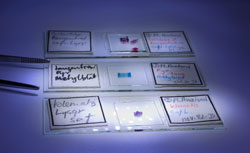Reproductive health of young Lithuanian men
Over the last 50 years there has been dramatic change for the worst with regard to male reproductive health. A number of countries have reported a decline in the sperm counts of the semen. During this period the incidence of testicular cancer has increased and is now the most common type of cancer in young males. However, there are marked geographic differences across Europe. It has also been found that there are differences in sperm counts between selected EU countries. The prevalence of other disorders of the male reproductive tract also appears to be increasing. These include conditions such as hypospadias, or misplacement of the urethral opening and cryptorchidism (absence of testes). Poor reproductive health leading to illness and or childlessness obviously has an impact on the quality of life of the individual affected. There may also a large social impact with changes to the age composition of European populations over the next 20 to 30 years. The increased knowledge obtained during the ENVIR. REPROD. HEALTH project may well help to find the causes behind these adverse trends. Studies were carried out into the reproductive function of young men in Lithuania, using military conscripts as subjects. Researchers recorded their physical appearance and testis volume, which was measured using an orchidometer and ultrasound. Semen quality (sperm concentration, motility and morphology) and reproductive hormone levels in blood samples, were also measured. The findings have also taken into account information on lifestyle, ante-natal and childhood exposure, and previous or current diseases. The data will be compared with findings from within the European Union countries. Additional information is being provided from the Baltic area to the centralised European database on male reproductive health.







